| Flag | Date | Use | Description |
|---|
 | 1973–1979 | 3rd State Flag of Equatorial Guinea | A horizontal tricolor of green, white and red with a blue isosceles triangle based on the hoist side and the emblem of Francisco Nguema centered in the white band. [4] |
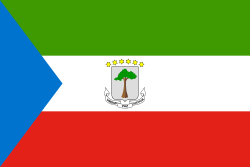 | 1969–1973 | 2nd State Flag of Equatorial Guinea | A horizontal tricolor of green, white and red with a blue isosceles triangle based on the hoist side and the National Coat of arms of Equatorial Guinea centered in the white band. |
 | 1968–1969 | 1st State Flag of Equatorial Guinea | A horizontal tricolor of green, white and red with a blue isosceles triangle based on the hoist side. [5] |
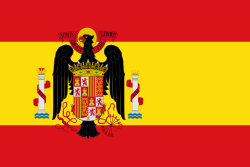 | 1945–1968 | Flag of Francoist Spain | Similar to the previous flag, but with a bigger eagle. |
 | 1938–1945 | Three horizontal stripes: red, yellow and red, the yellow strip being twice as wide as each red stripe with the francoist eagle coat of arms off-centred toward the hoist. |
 | 1936–1938 | Three horizontal stripes: red, yellow and red, the yellow strip being twice as wide as each red stripe with the coat of arms centered in the yellow band. |
 | 1931–1936 | Flag of the Second Spanish Republic | A horizontal tricolour of red, yellow and purple with the coat of arms centered in the yellow band. |
 | 1873–1874 | Flag of the First Spanish Republic | Three horizontal stripes: red, yellow and red, the yellow strip being twice as wide as each red stripe with the coat of arms off-centred toward the hoist. |
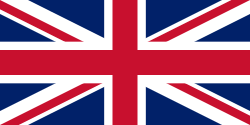 | 1827–1858 | Flag of the United Kingdom (During the British rule in Bioko) | A superimposition of the flags of England and Scotland with the Saint Patrick's Saltire (representing Ireland). |
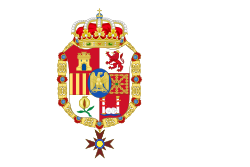 | 1808–1813 | Flag of Napoleonic Spain | A white field with the royal coat of arms off-centred toward the hoist. |
 | 1808–1813 | Flag of the First French Empire | A vertical tricolour of blue, white and red. |
 | 1785–1873 | Flag of the Kingdom of Spain | Three horizontal stripes: red, yellow and red, the yellow strip being twice as wide as each red stripe with the royal coat of arms off-centred toward the hoist. |
| 1874–1931 |
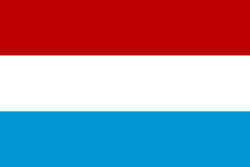 | 1662–1664 | States Flag | A horizontal tricolour of red, white and light blue. |
 | 1641–1649 | The Prince's Flag (during the Dutch occupations of Annobón) | A horizontal tricolour of orange, white and blue. |
| 1662–1664 |
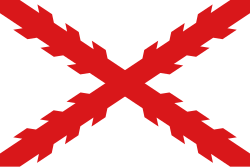 | 1580–1785 | Flag of the Kingdom of Spain | A red saltire resembling two crossed, roughly-pruned (knotted) branches, on a white field. |
 | 1578–1580 | Flag of the Kingdom of Portugal | A white field with the coat of arms in the center. |
 | 1521–1578 |
 | 1495–1521 |
 | 1485–1495 | Five blue escutcheons each charged with 5 bezants on a white field. Border: red with 7 yellow castles. |
 | 1472–1485 | Five blue escutcheons each charged with an undetermined number of bezants on a white field. Border: red with yellow castles and a green cross of the Order of Aviz. |






















